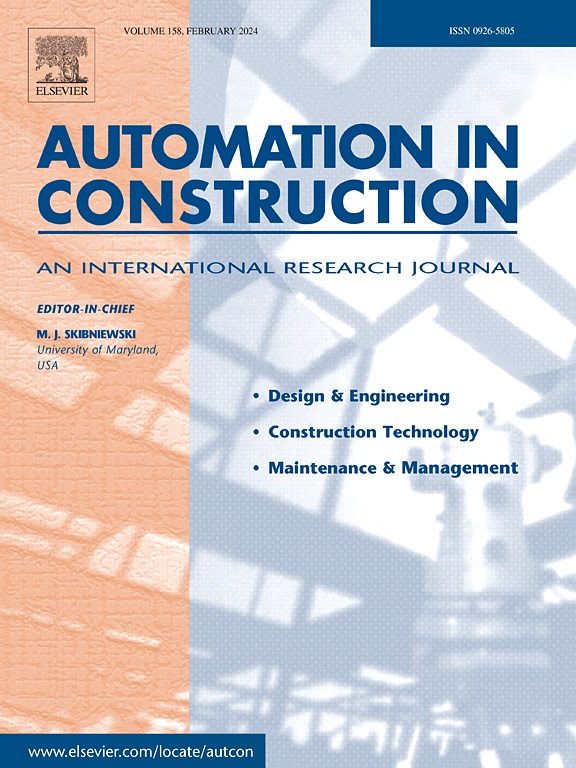2D–3D fusion approach for improved point cloud segmentation
IF 11.5
1区 工程技术
Q1 CONSTRUCTION & BUILDING TECHNOLOGY
引用次数: 0
Abstract
Semantic segmentation of point clouds with deep learning (DL) has shown significant potential. However, existing DL algorithms struggle with accurately segmenting categories with fewer instances or similar shapes. To address this issue, this paper proposes a 2D–3D fusion approach (Point-YOLO) to improving semantic segmentation accuracy of point clouds. The proposed method captures images from virtual cameras within point clouds and conducts image semantic segmentation with YOLO. Then, the image segmentation results are fused with point cloud segmentation results obtained from point-based DL methods (e.g., PointNet, PointNet++) for improved point cloud segmentation. The Point-YOLO approach improved mean class Accuracy by 14.52 % on the S3DIS dataset and 26.49 % on the underground dataset compared to PointNet++. The mean Intersection over Union for minority categories such as doors, windows, and air ducts improved by 37.65 %, 19.35 %, and 75.16 %, respectively. The proposed method also performed well for state-of-the-art algorithms such as PointNext and PointVector.
改进点云分割的2D-3D融合方法
基于深度学习的点云语义分割已显示出巨大的潜力。然而,现有的深度学习算法难以准确分割实例较少或形状相似的类别。针对这一问题,本文提出了一种2D-3D融合方法(point - yolo)来提高点云的语义分割精度。该方法从点云中捕获虚拟摄像机图像,并利用YOLO对图像进行语义分割。然后,将图像分割结果与基于点的深度学习方法(如PointNet、PointNet++)得到的点云分割结果融合,改进点云分割。与PointNet++相比,Point-YOLO方法在S3DIS数据集上的平均分类准确率提高了14.52%,在地下数据集上提高了26.49%。少数类别如门、窗和风管的平均十字路口分别提高了37.65%、19.35%和75.16%。该方法在PointNext和PointVector等最先进的算法中也表现良好。
本文章由计算机程序翻译,如有差异,请以英文原文为准。
求助全文
约1分钟内获得全文
求助全文
来源期刊

Automation in Construction
工程技术-工程:土木
CiteScore
19.20
自引率
16.50%
发文量
563
审稿时长
8.5 months
期刊介绍:
Automation in Construction is an international journal that focuses on publishing original research papers related to the use of Information Technologies in various aspects of the construction industry. The journal covers topics such as design, engineering, construction technologies, and the maintenance and management of constructed facilities.
The scope of Automation in Construction is extensive and covers all stages of the construction life cycle. This includes initial planning and design, construction of the facility, operation and maintenance, as well as the eventual dismantling and recycling of buildings and engineering structures.
 求助内容:
求助内容: 应助结果提醒方式:
应助结果提醒方式:


